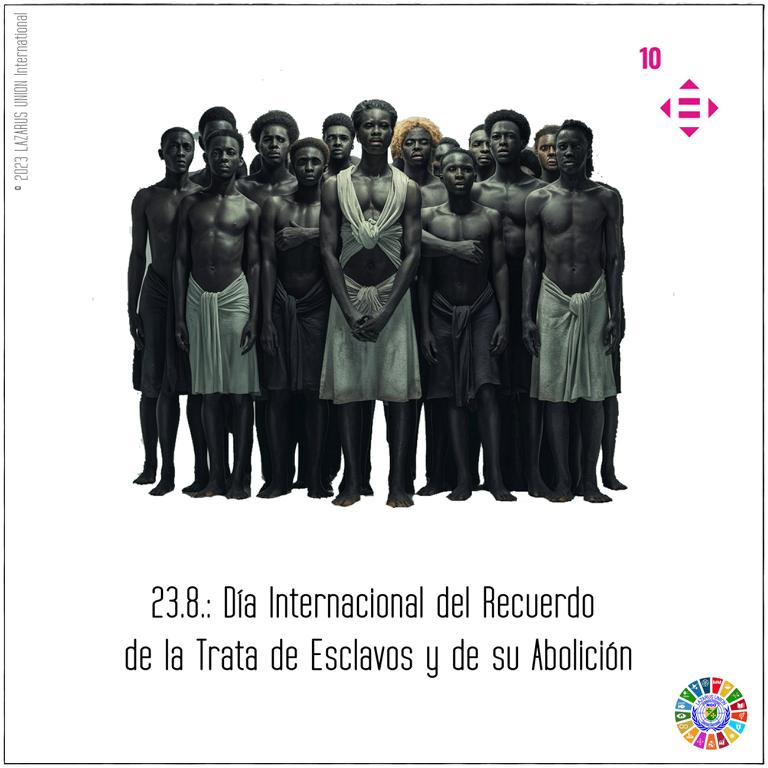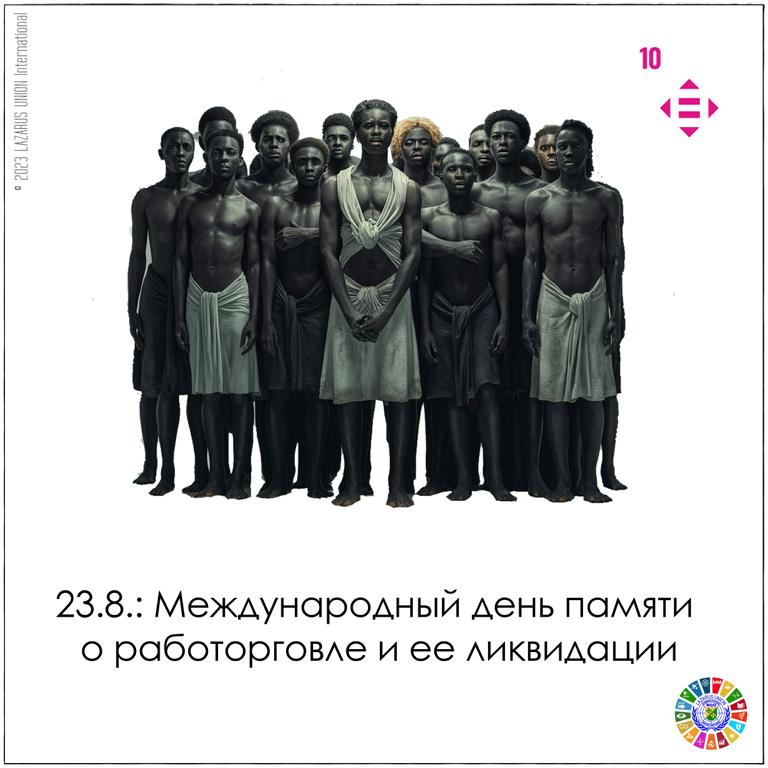On 27 April 1945, in the midst of the turmoil of the last days of the war, history was made in Vienna: With the proclamation of the Second Republic of... Read more
International Day for the Remembrance of the Slave Trade and Its Abolition
The International Day for the Remembrance of the Slave Trade and Its Abolition, observed annually on August 23rd, commemorates the transatlantic slave trade and its eventual abolition. This day not only honors the millions of African people who were enslaved and transported across the Atlantic but also celebrates the resilience and resistance of those who fought for their freedom. Established by UNESCO in 1998, the date marks the anniversary of the 1791 uprising in Santo Domingo (present-day Haiti and the Dominican Republic), which was a pivotal event in the abolition of the transatlantic slave trade.
Connection with Sustainable Development Goals (SDGs)
The International Day for the Remembrance of the Slave Trade and Its Abolition aligns closely with several of the United Nations Sustainable Development Goals (SDGs), particularly:
- SDG 10: Reduced Inequalities: This goal emphasizes the need to reduce inequality within and among countries. The remembrance of the slave trade highlights historical injustices and promotes efforts to address their legacies, including social and economic inequalities faced by descendants of enslaved people.
- SDG 16: Peace, Justice, and Strong Institutions: The abolition of the slave trade was a significant step towards justice. Acknowledging this history fosters a commitment to building inclusive societies and ensuring justice for all.
- SDG 17: Partnerships for the Goals: The global nature of the transatlantic slave trade and its abolition required collaboration across nations and communities. Similarly, achieving the SDGs requires robust partnerships and collective action.
Meaning for the Lazarus Union
The Lazarus Union, an international humanitarian organization, observes this day as a poignant reminder of the importance of human rights and dignity. The organization’s commitment to humanitarian aid, social justice, and solidarity with marginalized communities resonates deeply with the themes of this day. For the Lazarus Union, the remembrance of the slave trade is not only a historical reflection but also a call to action to combat modern forms of slavery and human trafficking, which still affect millions of people worldwide.






Facts and Figures
- The Transatlantic Slave Trade: Over a span of more than 400 years, an estimated 12.5 million Africans were forcibly transported across the Atlantic to the Americas. The journey, known as the Middle Passage, was notorious for its brutal conditions, with mortality rates ranging from 10% to 20%.
- Economic Impact: The slave trade was a cornerstone of the economies in the Americas and Europe, particularly in the development of the plantation economies in the Caribbean and the southern United States.
- Abolition Movement: The movement to abolish the transatlantic slave trade gained momentum in the late 18th century, led by figures such as Olaudah Equiano, William Wilberforce, and Toussaint Louverture. The British Empire abolished the slave trade in 1807, followed by the United States in 1808, although illegal trade continued for several decades.
The International Day for the Remembrance of the Slave Trade and Its Abolition is a crucial occasion for reflection, education, and advocacy. For organizations like the Lazarus Union, it underscores the ongoing struggle for human rights and the importance of solidarity in the face of historical and contemporary injustices.
References
- UNESCO. (1998). “International Day for the Remembrance of the Slave Trade and Its Abolition.” UNESCO
- United Nations. “Sustainable Development Goals.” United Nations
- BBC. (2020). “What was the transatlantic slave trade?” BBC
- National Archives. “The Abolition of the Slave Trade.” National Archives
- International Labour Organization. “Global Estimates of Modern Slavery.” ILO








